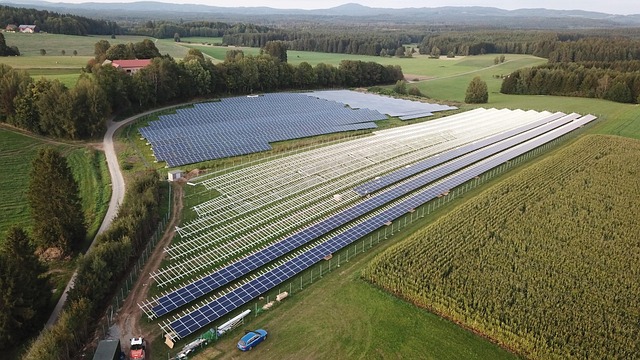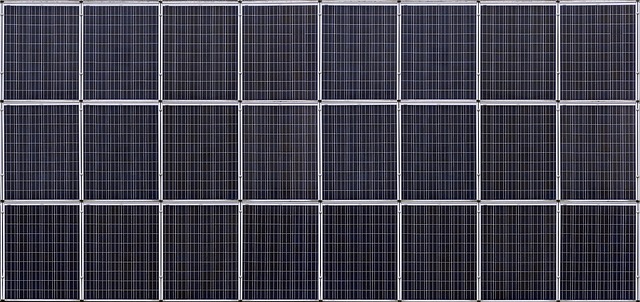From Sunlight to Electricity: The Magic of Solar Energy
The sun, the mighty star at the center of our solar system, has been revered by cultures for millennia. Its light not only fuels life on Earth but also represents a formidable source of energy that has the potential to power our world sustainably. The process of converting sunlight into usable electricity is nothing short of magical—a seamless interplay of physics, chemistry, and engineering that underpins a rapidly growing industry: solar energy. This article delves into the fascinating journey from sunlight to electricity, exploring the mechanisms behind solar energy, its applications, benefits, and the challenges facing its expansion.
The Science Behind Solar Energy
To understand solar energy, we must first familiarize ourselves with the fundamental concepts of how sunlight interacts with materials to produce electricity. When photons, the basic units of light, strike a surface, they can transfer their energy to electrons in atoms, knocking them free and allowing for the flow of electricity. This principal phenomenon is the basis of photovoltaic (PV) technology—the process used in solar panels to convert sunlight into electrical power.
Photovoltaic Cells: The Heart of Solar Panels
Photovoltaic cells, or solar cells, are the critical components that convert sunlight into electricity. Most common solar cells are made from silicon, a semiconductor material that efficiently converts light energy into electrical energy. When light strikes the surface of a silicon solar cell, it energizes the silicon atoms and frees electrons. These free electrons are then captured by electric fields within the solar cell, creating an electric current that flows out of the cell and can be harnessed as electricity.
The structure of a photovoltaic cell includes a few essential layers:
- Silicon Layer: The main semiconductor material that facilitates the generation of electricity.
- Anti-Reflective Coating: A layer that reduces the reflection of sunlight, allowing more light to penetrate the silicon.
- Conductive Material: A metallic grid that collects the freed electrons and conducts them away from the cell.
The Types of Solar Energy Technologies
Solar energy can be harnessed in two primary technologies: photovoltaic systems and solar thermal systems. Each has distinct mechanisms and applications.
Photovoltaic Systems
As previously mentioned, photovoltaic systems use solar panels to convert sunlight directly into electricity. These systems can be used for various applications, from residential rooftops to large utility-scale solar farms. The flexibility and scalability of photovoltaic systems make them a preferred choice for many consumers and businesses.
Solar Thermal Systems
Solar thermal energy, on the other hand, utilizes sunlight to heat a fluid, which can then be used to produce steam that drives a turbine to generate electricity. This technology is particularly effective in large-scale installations known as Concentrated Solar Power (CSP) plants. CSP typically uses mirrors or lenses to gather and focus sunlight onto a small area, creating enough heat to produce steam that drives a generator.
The Benefits of Solar Energy
The adoption of solar energy systems has burgeoned over the past few decades, and with good reason. The benefits of solar energy extend beyond mere convenience; they encompass environmental, economic, and social dimensions.
Environmental Benefits
One of the most notable advantages of solar energy is its minimal environmental impact. Solar power generation emits no greenhouse gases during operation, contributing to reduced air pollution and lower carbon footprints. As nations grapple with climate change, the transition to solar energy reinforces commitments to reduce reliance on fossil fuels and diminish carbon emissions.
Economic Advantages
The solar energy sector also provides economic benefits. The proliferation of solar technology has created thousands of jobs in manufacturing, installation, and maintenance. Moreover, as technology advances and production costs decline, solar energy systems have become more affordable, allowing homeowners and businesses to invest in solar power. Additionally, many regions offer incentives for solar installation, effectively lowering the initial investment and providing long-term savings on energy bills.
Energy Independence
Solar energy contributes to energy independence by reducing reliance on imported fuels. By harnessing its solar resources, countries can produce their electricity, stabilize energy prices, and mitigate the risks associated with global energy markets.
Energy Accessibility
Solar energy has the potential to provide electricity to remote and underserved communities. Off-grid solar systems can power homes and essential services in areas where traditional grid access is limited or nonexistent. This increased access to energy can spur economic development, improve healthcare, and enhance the quality of life for countless individuals.
The Challenges of Solar Energy
Despite its many benefits, the widespread adoption of solar energy faces several hurdles that must be addressed to unlock its full potential.
Intermittency and Reliability
Solar energy is inherently intermittent, as it depends on sunlight, which can fluctuate throughout the day and be affected by weather conditions. This variability presents challenges for grid stability and energy reliability, necessitating the implementation of advanced energy storage solutions. Technologies such as batteries and pumped hydro storage can help store excess energy generated during sunny periods for use during cloudy days or at night.
Land Use Concerns
Utility-scale solar farms require significant land for installation, raising concerns about land use and potential impacts on local ecosystems. Striking a balance between development and conservation is essential to promote solar energy without compromising biodiversity and natural habitats.
Initial Costs and Financial Barriers
While prices for solar systems have decreased, the initial installation costs remain a barrier for some consumers and businesses. Financial incentives, such as tax credits, rebates, and green financing options, have improved affordability, but ongoing efforts to expand access to financing solutions are crucial to enhance adoption rates.
The Future of Solar Energy
The future of solar energy is brimming with potential and innovation. The ongoing research and development in fields such as materials science and engineering are set to revolutionize solar technology further.
Advancements in Solar Technology
New materials such as perovskite solar cells are being explored to create more efficient and cost-effective solar panels. These emerging technologies promise higher energy conversion rates and lower production costs, potentially making solar energy even more accessible and attractive.
Integration with Smart Grids
As smart grids become more prevalent, the integration of solar energy into modern energy systems will facilitate better management of supply and demand. Smart grid technology can optimize energy distribution, predict energy consumption patterns, and enhance the reliability of solar-powered systems.
Global Collaboration and Policy Frameworks
Addressing the challenges of solar energy and promoting its adoption requires collaborative efforts between governments, private sector stakeholders, and communities. Policies that support research and development, investment in solar infrastructure, and incentives for consumers will be vital in accelerating the transition to a solar-powered future.
Conclusion
The journey from sunlight to electricity is not just a fascinating scientific endeavor; it’s a critical step toward a sustainable future. Solar energy represents a vital resource in humanity’s quest to combat climate change, promote economic stability, and improve the quality of life for people around the globe. As technology continues to evolve and awareness of its benefits grows, the magic of solar energy is poised to light the way to a cleaner, greener planet.



